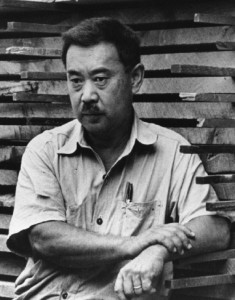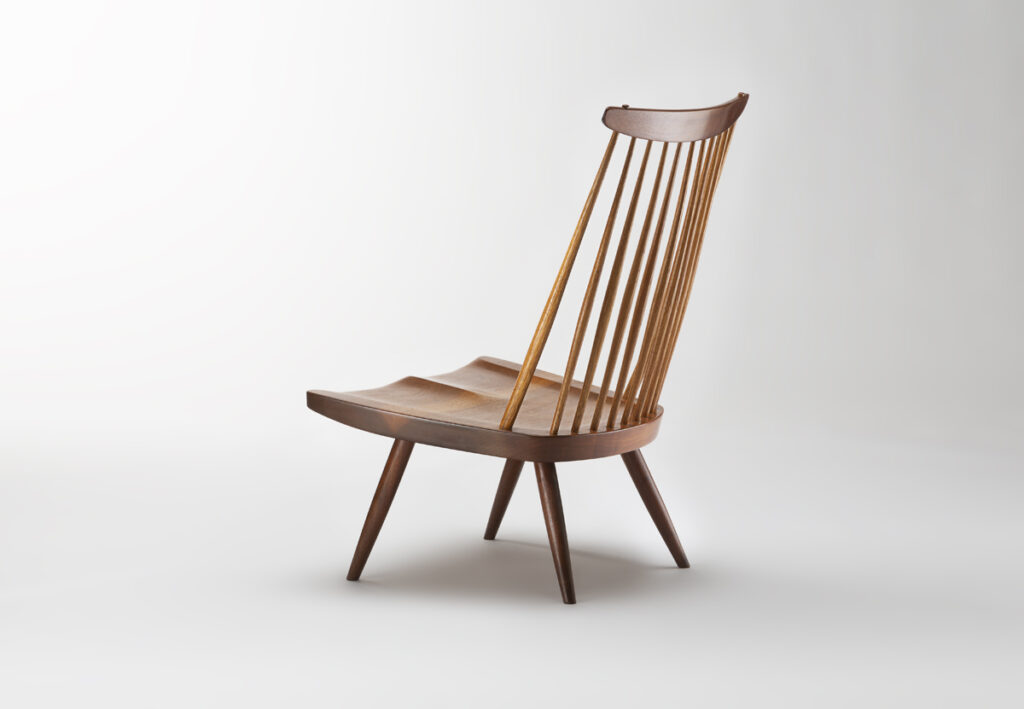
NAKASHIMA George
1905-1990
USA
Born near Seattle to Japanese parents in 1905, George Nakashima entered the prestigious MIT (Massachusetts Institute of Technology) from which he graduated in architecture. The Great Depression that hit the United States in the early 1930s prompted him to undertake a trip around the world that began in Paris, where he frequented the avant-gardes in the Montparnasse district. Eager to reconnect with his origins, Nakashima spent the next 5 years in Tokyo, where he discovered Japanese traditions and aesthetics. In 1937, he was offered a position in Pondicherry by Antonin Raymond, a close collaborator of Frank Lloyd Wright. His mission: to contribute to the construction of the Ashram of Sro Orobindo, an architect of Indian independence, with whom he became friends. The experience was a happy one, but the start of the Second World War heralded his return to the United States; Because of his Japanese origins, which earned him the distrust of his own government, Nakashima was placed in a detention camp in Idaho. It was in the camp itself that Nakashima perfected his cabinetmaking technique. This episode, as well as the travels that preceded it, would considerably change his view of the world. Released in 1943, George Nakashima settled in New Hope, Pennsylvania, on an acre of virgin land surrounded by forests, where he built his house and developed his cabinetmaking business.
Archives
No data was found


